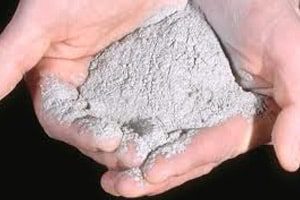
A National Institute for Occupational Safety and Health (NIOSH) study has found that workers at some hydraulic fracturing (fracking) sites are being exposed to high levels of dangerous silica, which can lead to a serious lung disease. The worker are from 11 fracking sites in five states have been exposed to high levels of dust […]
 A National Institute for Occupational Safety and Health (NIOSH) study has found that workers at some hydraulic fracturing (fracking) sites are being exposed to high levels of dangerous silica, which can lead to a serious lung disease.
A National Institute for Occupational Safety and Health (NIOSH) study has found that workers at some hydraulic fracturing (fracking) sites are being exposed to high levels of dangerous silica, which can lead to a serious lung disease.
The worker are from 11 fracking sites in five states have been exposed to high levels of dust that includes silica, according to the Center for Effective Government, the International Business Times (IBT) reported.
We’ve written that NIOSH and the Occupational Safety and Health Administration (OSHA) expressed concerns over the effects of silica on workers in the fracking industry. There are also significant concerns that this hazard extends to area residents.
Fracking uses a cocktail of fresh water, sand, and more than 500 chemicals that, with the use of a high-powered drill, are injected into the ground through a long, horizontal well. The purpose is to reach a shale formation that is typically about two miles below the earth’s surface. During fracking, the one major additive to fracking water is sand—silica—which is used to open small fissures in the previously tight shale formations. Sand accounts for nearly 10 percent of the mixture and fracking sand contains about 99 percent silica. In any given drilling site, upwards of three-four million pounds of silica are used.
Critics say fracking devastates the environment and contaminates groundwater and underground water aquifers; this contaminates nearby and widespread fresh water supplies. Until now, ground water contamination has been a major fracking issue; however, OSHA’s recent warning about dangerous silica levels adds another significant level to the fracking debate.
OSHA previously issued a hazard alert concerning crystalline silica exposures at fracking locations and the increases to worker risks for silicosis. The NIOSH data release in April 2012 and OSHA’s June 2012 hazard alert—which specifically discussed overexposure risks to respirable crystalline silica—should be a wake-up call to industry.
OSHA-NIOSH explained that respirable crystalline silica is that part of crystalline silica minute enough to enter the lungs’ gas-exchange regions, which can cause silicosis and has been linked to a number of cancers. Silicosis presents added complications in that its latency period is not fixed and can depend on how, and for how long, exposure occurred. OSHA says the silicosis latency period can be as short as a few months in acute overexposure situations, and up to decades for exposures considered low to moderate.
During fracking, sand is delivered, loaded, transferred, and blended before injection, NIOSH/OSHA explains. That movement of silica sand in and through sand movers, transfer belts, and blender hoppers can release silica dust into the air and into workers’ lungs. This silica dust movement can also lead to visible, significant silica dust clouds which can hover over work sites and communities, which is what led to the high exposure measurements by NIOSH. Meanwhile, OSHA noted that traditional half-face respirators are insufficient protection for workers in high-exposure areas.
Symptoms of chronic/classic silicosis are not often obvious, which means that those working or living in or near fracking sites need to receive chest X-rays to determine if silica-related lung damage occurred. Early symptoms may include shortness of breath when exercising and clinical signs of poor oxygen/carbon dioxide exchange. As the disease progresses, patients may experience fatigue, extreme shortness of breath, cough, and respiratory failure; lung cancer and diseases including tuberculosis, chronic obstructive pulmonary disease (COPD), and kidney and autoimmune disease have been linked to silica overexposure, said NIOSH/OSHA.
Overexposure to respirable crystalline silica has long been known to cause silicosis and has been the focus of lawsuits for years. Steel workers and workers in other industries have been filing silicosis claims for decades. In fact, a recent wave of silicosis claims was seen from 2000-2004, prompting a federal silica multidistrict litigation (MDL) in 2003, explained Law 360 previously. The MDL was, for the most part, halted after the judge issued an opinion that criticized plaintiffs’ counsel and medical experts. This led to mass dismissals of silica lawsuits, nationwide and to grand jury investigations of plaintiffs’ council and experts.
Should silica overexposure from fracking be as serious as what has been indicated in early data—and there’s no reason to believe otherwise—legal claims against the shale gas drilling industry could be more imminent than expected—within the next few years, Law 360 predicts.


